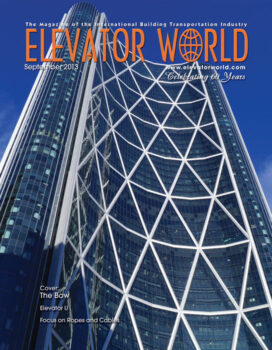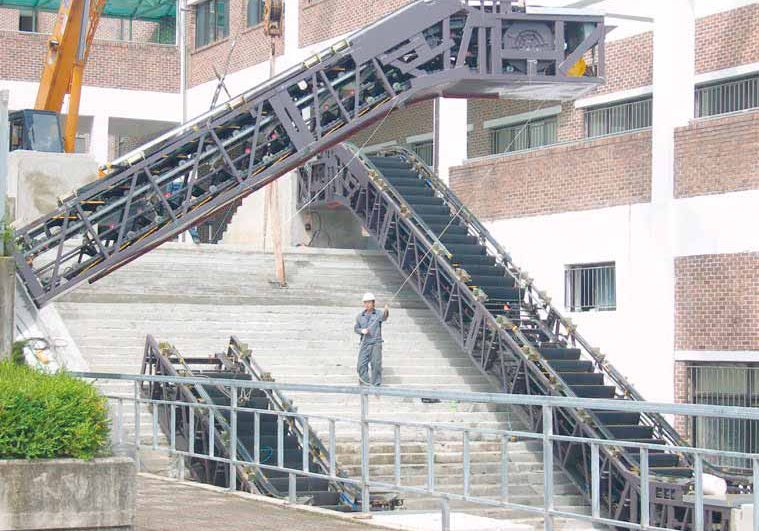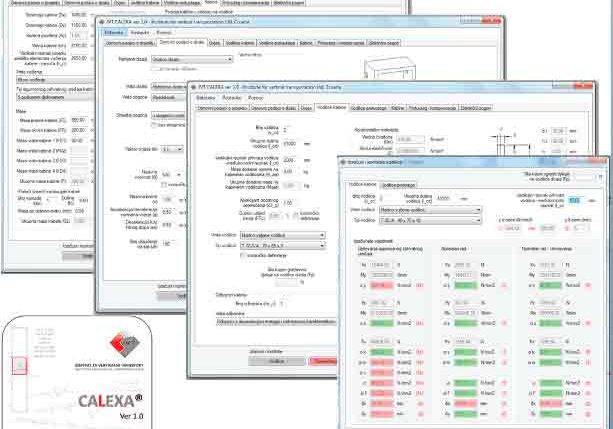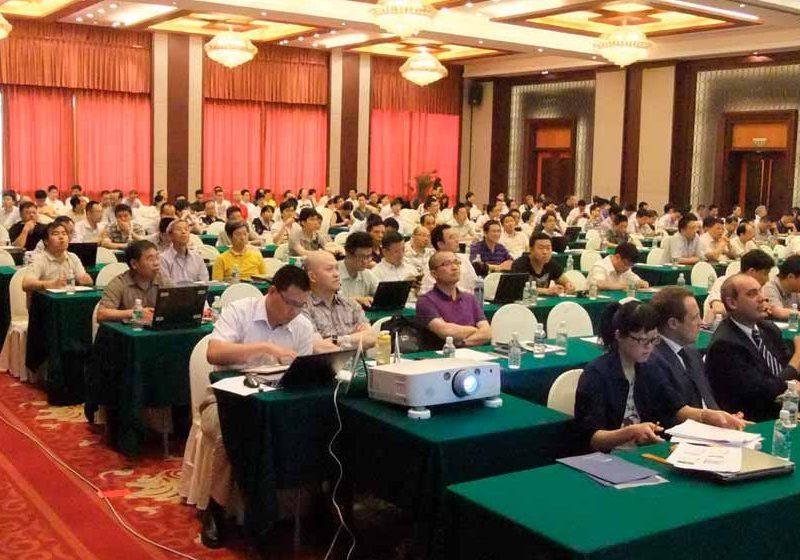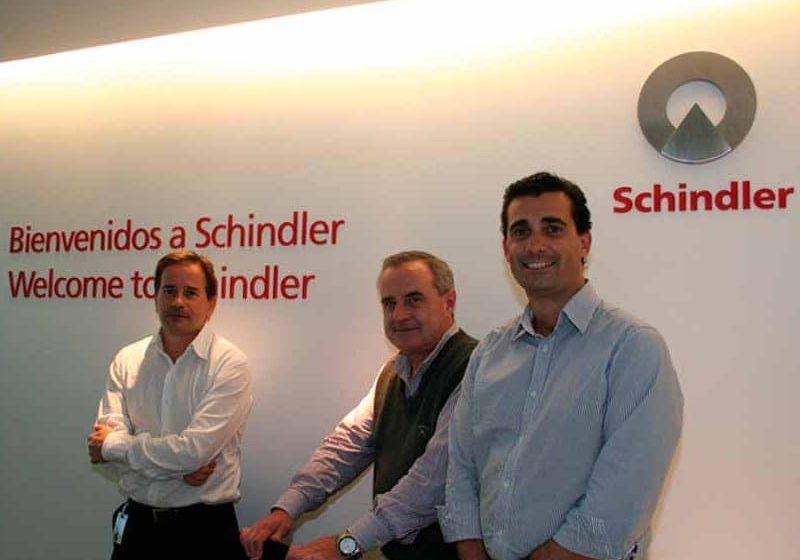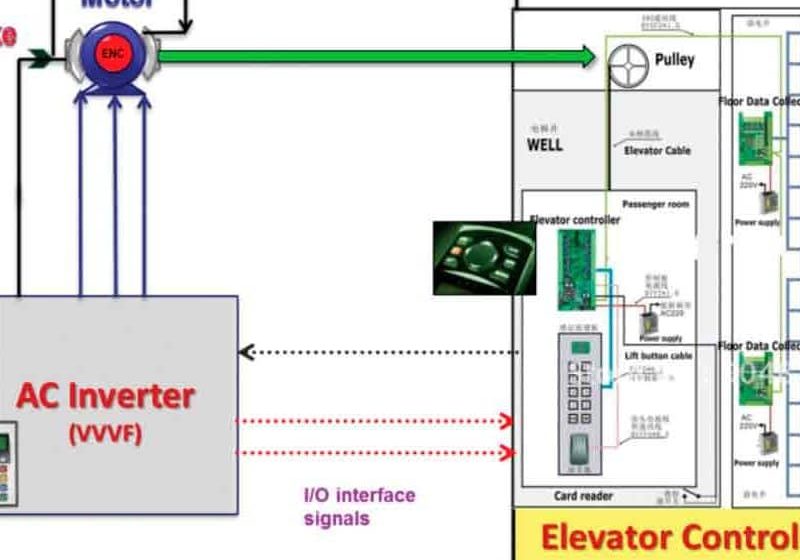Built on Humble Roots, Sweden’s Alimak Hek Develops Rack-and-Pinion Lifts for Iconic Structures
Sep 1, 2013
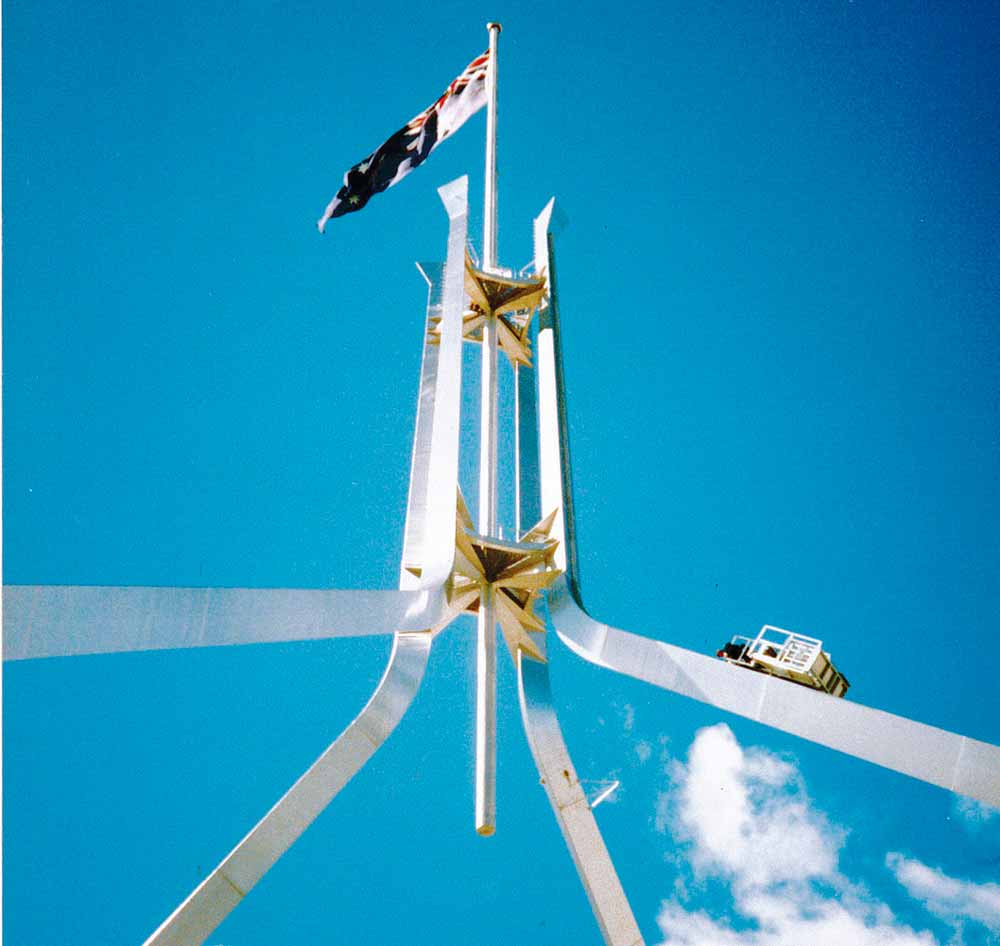
When Alimak Hek unveiled its rack-and-pinion construction hoist in Stockholm, Sweden, in the early 1960s, it was nearly laughed out of town, recalls CEO Tormod Gunleiksrud. Today, the company that traces its roots to a humble mortar mixer has developed rack-and-pinion systems that navigate some of the world’s most iconic structures, such as the Eiffel Tower in Paris and the Royal Opera House in London. And, in 2013, Alimak Hek marks 25 years of service with a unique, two-elevator rack-and-pinion system that delicately traverses 81 m of flagpole atop the Parliament House in Canberra, Australia. Designed by Alimak Hek, it allows workers to, among other things, change a flag that’s half the size of a tennis court.
The company that is today Alimak Hek was founded as “Alimak” in 1948 by former construction worker Alvar Lindmark, who patented his Limak mortar mixer that year and introduced his first construction hoist a few years later. “Hek” was added to the name when the company merged with Netherlands-based Hek in 2001. Through improving on existing technology, expanding into target markets and acquiring competitors, Alimak Hek has grown to the point where its name is now synonymous with rack-and-pinion technology. Today Alimak Hek’s product portfolio boasts construction hoists, industrial elevators, transport platforms, material hoists and work platforms.
Building a Better Hoist
The company’s current rack-and-pinion systems were predicated by relatively simple hoists such as the Raise Climber, which was popular with the mining industry in the 1950s. The climber’s pin-rack system was utilitarian and fine for mining, but Lindmark strove to improve on it by making it faster and minimizing vibration.
The solution was a rack-and-pinion system similar to an unpopular predecessor: After a patent was issued for the system, it was only used in an 1880s Stockholm apartment building. Upon seeing Lindmark’s first design, the Swedish Board of Occupational Safety and Health essentially told his designer to go home. He did, but a fire had been enkindled in him to come up with a hoist above reproach. After a couple of years, Lindmark’s design team came up with a hoist that could be easily and quickly assembled to practically any height. The construction industry ended up liking it – a lot.
A Little Stealth Comes into Play
Lindmark’s mortar mixer was designed to make bricklaying easier and billed as “the hand that never stops.” After an initial backlash from human mixers who felt that their jobs were being threatened, the mixer eventually gained a foothold in the market. Then came development of the first construction hoist. Made of wood, it was designed to alleviate the strenuous task of carrying materials to rooftops, something Lindmark not-so-fondly remembered from his days as a construction worker. He improved upon initial designs and ended up enjoying success with the product, selling nearly 100 units in only a few months.
It was hard going in the beginning for the hoists, as well. Critics pointed to the hoist’s vibrations and the system’s susceptibility to wear and tear. The company had faith in its product, however — so much so that when one of its principals was appointed to a national committee to determine new hoist regulations, he deliberately downplayed the system’s significance in order to lull competitors into a false sense of complacency.
The ploy worked, with what at the time was Alimak Verken becoming a dominant player in the market. The company’s introduction of its rack-and-pinion hoist ended up playing a major role in the Swedish government’s “Million Project,” Gunleiksrud said, the goal of which was to build one million housing units within 10 years.
The company started by a construction worker who borrowed SEK500 (US$73.48) has grown into a company with some 900 employees worldwide, not counting contractors who work on a project-by-project basis. With the lion’s share of its operations in Sweden and China, Alimak Hek has a presence in about 30 countries, Gunleiksrud said. And, perhaps more satisfying, it continues to land complex, challenging projects like the Parliament House of Australia in Canberra.
Acquisitions and mergers have been a big part of the business’s story. In 1996, Alimak acquired Cimar, the leading Italian work-platform manufacturer. Alimak’s 2001 merger with Hek, meanwhile, ushered in a new era of growth, with the company continuing to make acquisitions and establishing subsidiaries in the emerging countries of Brazil, India and China.
TV Helps Bring Alimak Hek to New Heights
In the early 1960s, televisions were showing up in more and more homes, and Alimak Hek was there to play a pivotal role. “TV sets were popping up like mushrooms at the end of the 1950s,” writes author Lars Westerlund in ALIMAK – The first 50 years.
In response, Lindmark sketched a gas-driven lift specifically to service TV and radio towers. These products ended up, according to the company, being installed at all TV masts in Sweden. They were also exported.
Alimak Hek reports it has supplied more than 200 elevators to communication towers around the world, at least 100 of them to Terracom (formerly Televerket Radio Sweden). The tallest mast in Sweden is the “Storbergsmasten,” which stands at 1099 ft. (335 m). In Hudiksvall, Sweden, it is used for FM radio and TV broadcasting. Most Alimak Hek masts range between 200-300 m, but the company also built the hoist for the Warsaw radio mast, which at 645 m was the world’s tallest structure until its collapse in 1991.
The company has become a specialist in tackling daunting, unique projects worldwide, something that Gunleiksrud said he feels is a key to a success strategy that champions a “solution-focused approach to customer problems, our absolute priority on safety, highly professional engineering, quality materials and the company’s preparedness and ability to support our products for the production lifetime.”
The specialized system the company designed, installed and helps maintain for the Parliament House flagpole is a testament to this philosophy, Gunleiksrud said. Alimak Hek engineers designed the two-elevator system – one that travels at a 400 angle and another vertically traveling one – to blend with the architecture. The first elevator holds three people and the second, one. In this system, Alimak Hek used a soft, bronze pinion since it:
- Contains wear of the elevator to a single compartment enclosed within the gearbox, instead of wear to the entire 81 m of rack that traverses the flagpole
- Allows the elevator to operate without lubricants
- Avoids potential staining of the flagpole
- Minimizes noise and movement of the elevator car
Via a specialized cage cabin, workers perform tasks such as replacing burned-out lights that illuminate the flag. Parliament House employees handle repairs on an as-needed basis, and Alimak Hek services the system every four years.
Alimak Hek has not been immune to the economic downturn, Gunleiksrud said. However, company officials saw the signs early and adjusted the company’s organization and cost base accordingly, he explained. Gunleiksrud said the company is well positioned for the future. “We believe we have a good strategy in place for our product portfolio, as well as where we would like to sell it,” he said. “At the end of the day, it comes down to what value you can bring to your customers, and making sure that you are competitive in the fields that you are active.”
Alimak Hek through the Years
Alimak Hek has a history that starts in Stockholm, Sweden, in 1948 with Alvar Lindmark’s patented Limak mortar mixer. Here are a few of the other milestones in the company’s history:
- 1950: The first material hoist with a wooden mast tower is introduced.
- 1958: Inspired by the Biblical tale of Jacob’s Ladder, Lindmark unveils his first rack and pinion mast-climbing work platform.
- 1960: Alimak establishes its first U.S. subsidiary in San Francisco. The company has grown to about 250 employees.
- 1961: Hek is founded in the Netherlands.
- 1962: The first rack-and-pinion construction hoist is introduced.
- 1966: The first permanent Alimak industrial elevator is installed.
- 1968: Subsidiary established in England.
- 1973: First lift delivery to the offshore industry; subsidiaries established in France and Denmark.
- 1978: Alimak enters rental business.
- 1996: Alimak acquires Cimar, the leading Italian work platform manufacturer.
- 2001: Alimak and Hek merge to form Alimak Hek.
- 2006: Alimak Hek starts manufacturing in China.
- 2008: India subsidiary established.
- 2010: Brazil subsidiary established.
Navigating Icons
Alimek Hek has become one of the go-to solution providers for the navigation of structural icons around the world. Today, the company’s customized rack-and -pinion lifts help service such structures as:
- The Eurotunnel between Dover, England, and Calais, France
- The Arab Potash Company’s plant on the Dead Sea, Jordan
- CN Tower, Toronto
- Eiffel Tower, Paris
- Halley Research Station, Antarctica
- The Torre de Collserola in Barcelona (a 288.4 m tower designed for the 1992 Summer Olympics)
- Royal Opera House, London
- Sudbury Neutrino Observatory in Sudbury, Ontario (located about 2 km underground)
Get more of Elevator World. Sign up for our free e-newsletter.

